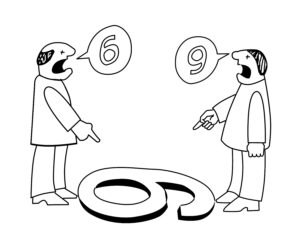Introducing
THE COMMUNICATOR™
The most effective communication tool of the 21st century.
“Communication” is a word with many different definitions. Generally, it refers to the act of transmitting information from one place, person, or group to another. If you took a communications class in college, you might even take it a step further and think of it as the act of “encoding” (sending a message) and “decoding” (receiving a message).
Because the truth is that communication isn’t always straightforward and easy. Just because you’ve told someone something, that doesn’t necessarily mean that you truly communicated it. Until a message is understood and acknowledged, has it really been received?
The Communicator is a tool that is designed to help you get someone’s attention, so that your message is heard and understood. 
What makes The Communicator so effective is that it anchors your message. It’s a visible, tangible object that both the speaker and listener can see and feel. You are not just communicating in the auditory sense. By anchoring your communication through touch (kinesthetic) and through sight (visual), The Communicator should make your message delivery three times more effective. It’s the perfect tool for when you really need to get your message across.
How to use The Communicator effectively:
- First and most importantly: make sure it is a good time to talk. If so, hand The Communicator to the other person, then deliver your message.
- Ask them to repeat your message back to you. Make sure they heard the statement/question as you intended for it to be delivered.
- Listen to their response. 50 percent of communication is listening. Most people are too busy thinking about what they are going to say next to truly listen. When you are trying to communicate, make sure that you are actively listening to what the other person is saying. How does one listen? Focus. Turn off distractions. Repeat what they said to you. Be empathetic. Try to understand where they are coming from. Put yourself in their shoes.

Now, just because you said it, that does not mean they heard you. As well, you can say “to-may-toe” and they can say “to-mah-toe” — six to one is half a dozen to another. Just like the drawing, you can both be right, and sometimes you just have to agree to disagree. The main point is that you have delivered, and the other party has acknowledged your intended message.
If you’re interested in taking a deeper dive into the tips and strategies that will help you effectively improve your communication, download the companion guide The Communicator: A Man’s Guide to Better Relationships at : Listen Baby